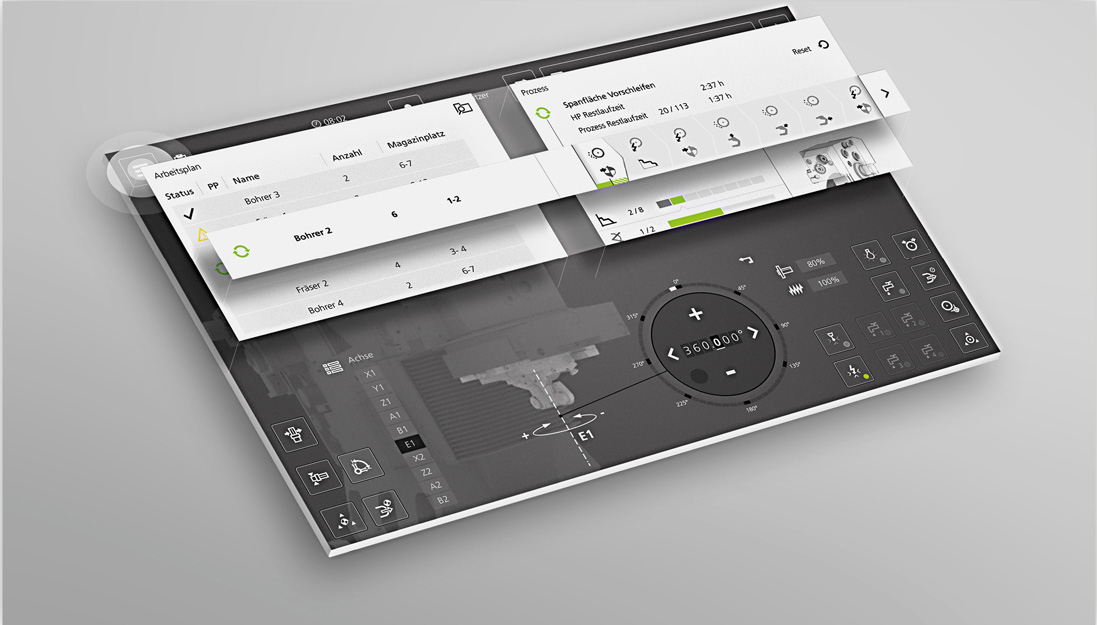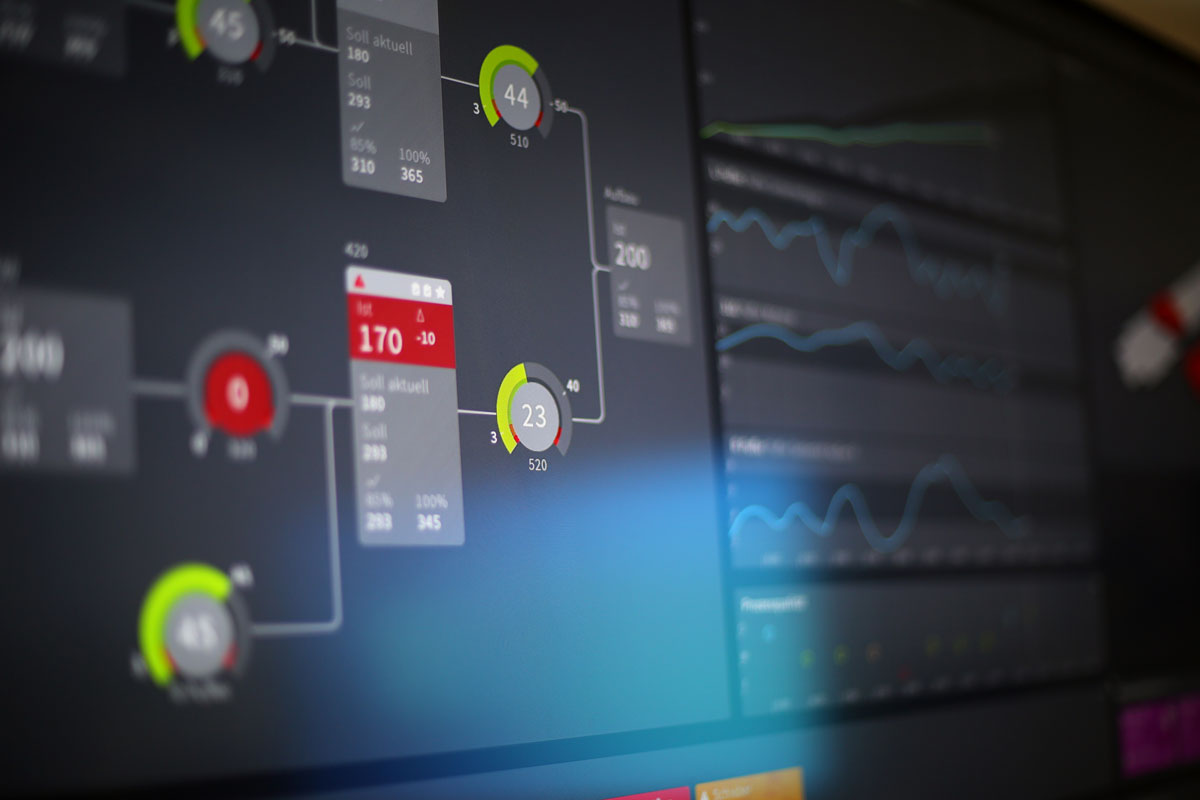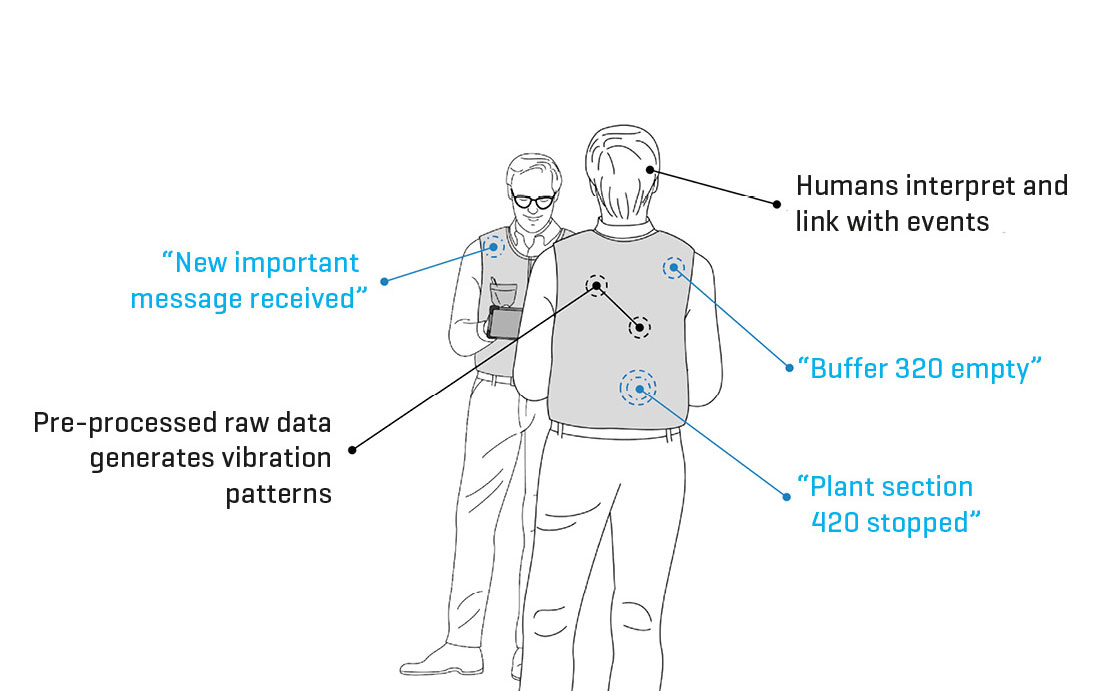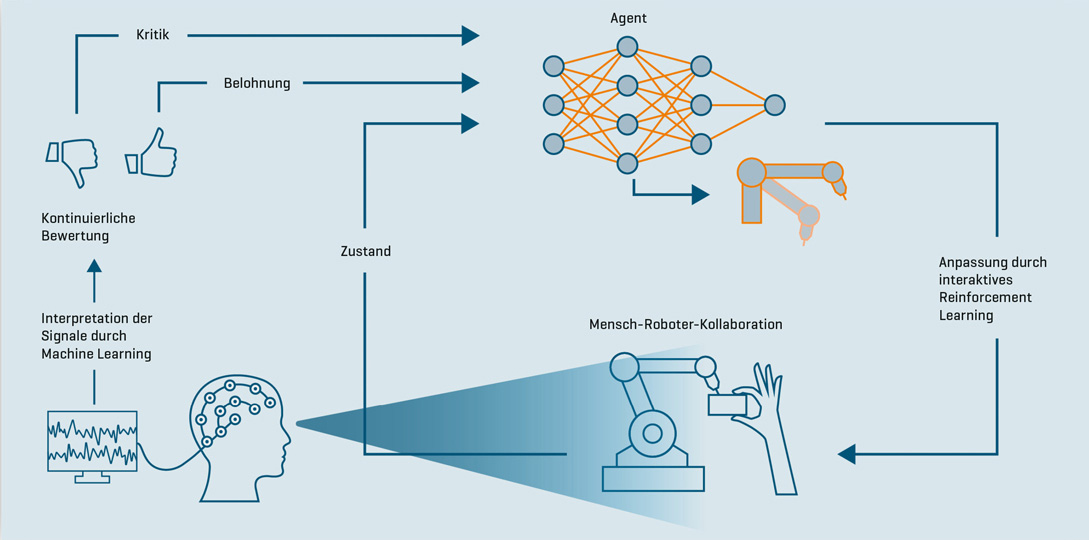Man and machine
Strongest together
It’s all about the design
Networking and machine learning enable increasing autonomy of technology. This raises new questions in terms of the design of human-technology interaction. How can productive cooperation between humans and intelligent machines be successful? Should we rely on assistance systems to support human activities and decision making? Or do we even want to fully transfer responsibility and leadership for specific tasks to technology? Apart from technical feasibility and economic benefit, ethical and social issues are playing an increasingly important role. What kind of understanding of the roles of man and machine will we have in the future? In the research field of Human-Technology Interaction at Fraunhofer IAO, more than 40 experts are researching the question of how we can make the most of technical progress – for business and for people.
TEXT Matthias Peissner, Kathrin Pollmann, David Blank IMAGES Fraunhofer IAO
HMI design – productivity factor and unique selling point
As a result of the digitisation of production, the interface between man and machine – the so-called human-machine interface (HMI) – has become a strategic productivity factor. Usability is the magic word. The HMI is intended to make operation as intuitive, easy, safe and error-free as possible. With increasing process complexity and if several different systems need to be operated, the standardisation of interfaces becomes more important. The goal is to allow for complex facts and extensive data to be understood as quickly and intuitively as a smartphone app.
IT for the hall floor – as simple as the app on your mobile phone
However, HMIs are not only important to increase employee productivity. In terms of the company’s public image, they have become a calling card, a quality feature and an expression of innovative strength. Technology leadership or particularly practical functions of a new machine can only be identified and experienced by decision-makers and users through excellent HMI design.
The right information at the right time in the right place
The transfer of large amounts of data is an increasingly important aspect of HMI design. With new sensors and a higher degree of network integration of the systems, a vast amount of information becomes available that can be used, for example, for process optimisation. The prerequisite for this, however, is that the data is pre-processed and integrated into meaningful information and eventually made available to the user in the form of suitable visualisation formats.
For data processing, the Fraunhofer researchers use modern machine learning processes in order to gain valuable insights from data, for example about future requirements or tailored use of resources in the industrial processes of their partner companies. As part of the AI progress centre ‘Learning Systems and Cognitive Robotics’*, companies receive public funding for AI projects with Fraunhofer under specific conditions.
To ensure optimal visualisation of information, the Fraunhofer laboratories are focusing their research on two specific topics: firstly, modern visualisation approaches are to be expanded by further modalities such as vibration (see tactile vests shown in the figure), allowing information to be transmitted in a casual manner when the visual attention is directed elsewhere. Secondly, the focus is on information management – or the question of how personalisation and context awareness allow the information to reach people in a targeted way and to be presented in exactly the right form so that it can be of maximum benefit.
Providing ‘superpowers’ through artificial intelligence
In addition to data analysis and intelligent forecasts, artificial intelligence (AI) processes offer numerous other potentials for making processes flexible and efficient. However, the greatest benefit of AI does not lie in automation, but in cooperation with people. The different strengths of AI technology and humans offer optimal prerequisites for a profitable collaboration.
For example, the recognition and interpretation of language and gestures can enable very intuitive and natural forms of interaction with technical systems, which in the future may even extend to simplified programming of a robot. Another area is decision-making support. Using a digital model of a system or a process allows simulation of different options for action and their likely effects in order to support informed decision making. This, for example, allows to determine an optimal set of parameters to make a manufacturing process as fast as possible or as high-quality as possible.
In short: AI can enhance human abilities. It can give us ‘superpowers’ and significantly increase our productivity. However, to ensure that these opportunities are accepted and able to benefit the individual employees, it is crucial that people receiving support from AI actually experience it as an enhancement of their own skills and are able to benefit from it in a sustainable manner. After all, people feeling comfortable in their workplace and enjoying the use of their digital work equipment are demonstrably more committed, more motivated and identify more strongly with the goals of their employer.

OUTSTANDING HMIS COMBINE INTUITIVE USABILITY AND ATTRACTIVE DESIGN. THE PICTURE SHOWS THE HMI FROM A PROJECT FOR VOLLMER MASCHINENWERKE
Winning employees over and inspiring them
HMI solutions that optimally support processes and inspire employees are not born out of coincidence. Rather, they arise when all groups of people involved are part of the development process and contribute their requirements. Modern HMI engineering processes therefore rely on the cooperation between design, development and the users, because the better we know the target groups of a system, their work context and their work processes, the more precisely can we tailor the functions and the interaction design to their needs.
For the conception, for example, it is important to know whether an application should rather address the employees’ understanding of their abilities or the need for security. Fulfilling a user’s need creates positive emotions so that the employees are motivated and feel that working with the system is an enriching experience. Failure to meet a need will lead to frustration in the long term.
„Good design starts with the individual and its needs. It is a decision-making process and a success factor – not an art form.“
The principles and methodologies for such a holistic, needs-oriented design have been summarised by the scientists of Fraunhofer IAO in their UXellence® toolbox, which they have applied working with customers such as Bosch, ORANGE, Zeiss, Kellenberger, Volkswagen Commercial Vehicles and Oerlikon not only in the consumer goods sector, but especially for designing work systems.
‘Gamification’ can create additional added value. In this process, industrial applications are specifically enriched with playful elements, e.g. to strengthen team spirit, to increase motivation and concentration, to avoid monotony or to make learning and further education more exciting. Gamification can unfold its effect when a work task is staged as a playful overall experience in order to emphasise the intrinsic value of the activity. In a cooperation with Volkswagen, gamification helped to produce a major effect on intrinsic motivation and stimulation. Psychological stress was reduced and the monitoring performance was influenced in a positive way. Ultimately, this increased the productivity of the system.


FRAUNHOFER DESIGN OF AN INFORMATION WALL TO OPTIMISE VEHICLE PRODUCTION AT VOLKSWAGEN (TOP). WILL INFORMATION ALSO BE CONVEYED VIA ‘TACTILE VESTS’ (BOTTOM) IN THE FUTURE?
Sensitive technology from the Neuro-Lab
Future visions of a technology that consistently adapts to people are developed at the Neuro-Lab of Fraunhofer IAO. Since 2010, the researchers have been working on making neuroscience processes usable for everyday industrial application. One focus of the Neuro-Lab is the neuroscientific expansion of user tests. For example, to better understand emotions or attention processes. In addition, the use of neural signals also provides an interesting new type of input option for interactive systems. In the area of these so-called brain-computer interfaces (BCI), current development projects of the IAO, for example, focus on the following applications:
Work at the Neuro-Lab will significantly push the boundaries of what technology can do for us humans. It is still unlikely that we will control industrial processes with our thoughts in the future. Nevertheless, personalised further training offers and empathic work systems that respond to individual needs and situational stresses are a big step towards a human-centred working world.
Dr. Matthias Peissner is the director of the institute and heads the human-technology interaction research department at Fraunhofer IAO. His interdisciplinary teams work on solutions that enable efficient interaction between humans and intelligent technology. His work focuses on adaptable systems, future work environments and the creation of positive user experiences. He coordinates the AI progress centre ‘Learning Systems’, which is part of the internationally renowned Cyber Valley in Stuttgart/Tübingen. As an expert in the human-friendly design of AI systems, he is involved in the ‘Platform for Learning Systems’ and the ‘Global Partnership on AI’.

NEUROPHYSIOLOGICAL MEASUREMENTS (HERE ELECTROENCEPHALOGRAPHY, EEG) CAN HELP TO DESIGN OPTIMAL VEHICLE INTERIORS AND SUPPORT THE PROGRAMMING OF COLLABORATIVE ROBOTS.